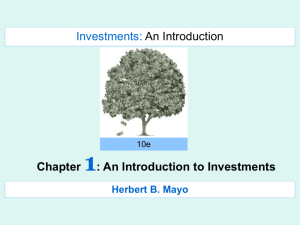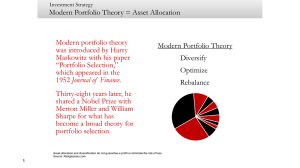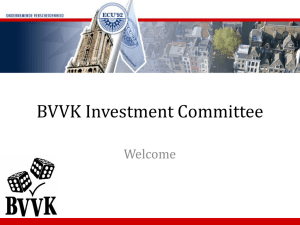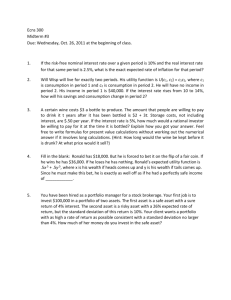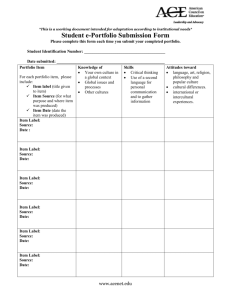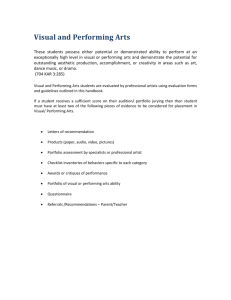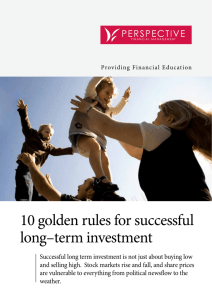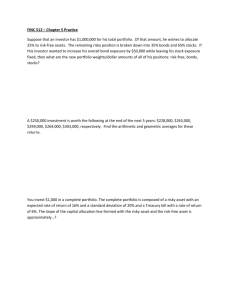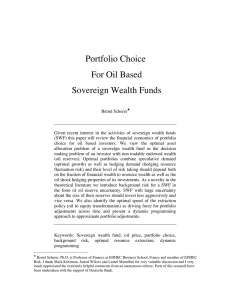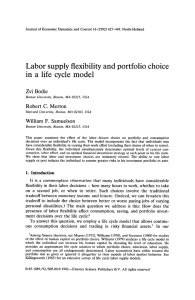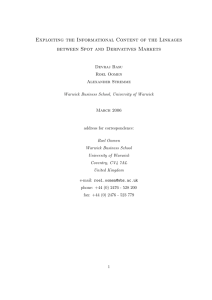Investment Process Philosophy
advertisement
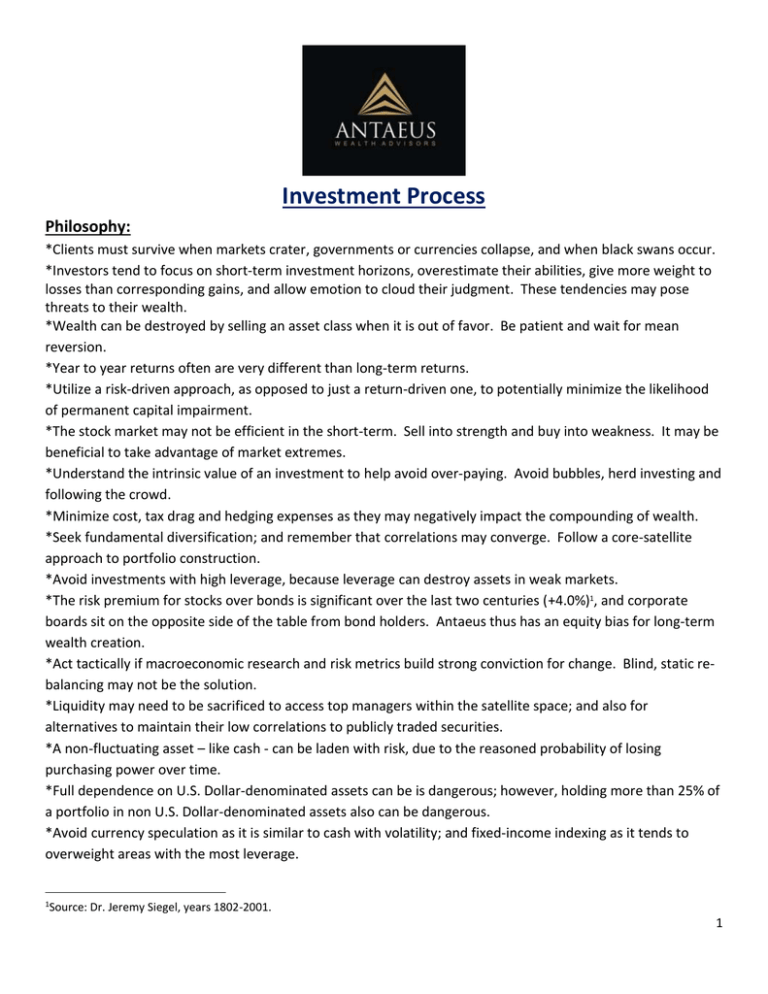
Investment Process Philosophy: *Clients must survive when markets crater, governments or currencies collapse, and when black swans occur. *Investors tend to focus on short-term investment horizons, overestimate their abilities, give more weight to losses than corresponding gains, and allow emotion to cloud their judgment. These tendencies may pose threats to their wealth. *Wealth can be destroyed by selling an asset class when it is out of favor. Be patient and wait for mean reversion. *Year to year returns often are very different than long-term returns. *Utilize a risk-driven approach, as opposed to just a return-driven one, to potentially minimize the likelihood of permanent capital impairment. *The stock market may not be efficient in the short-term. Sell into strength and buy into weakness. It may be beneficial to take advantage of market extremes. *Understand the intrinsic value of an investment to help avoid over-paying. Avoid bubbles, herd investing and following the crowd. *Minimize cost, tax drag and hedging expenses as they may negatively impact the compounding of wealth. *Seek fundamental diversification; and remember that correlations may converge. Follow a core-satellite approach to portfolio construction. *Avoid investments with high leverage, because leverage can destroy assets in weak markets. *The risk premium for stocks over bonds is significant over the last two centuries (+4.0%)1, and corporate boards sit on the opposite side of the table from bond holders. Antaeus thus has an equity bias for long-term wealth creation. *Act tactically if macroeconomic research and risk metrics build strong conviction for change. Blind, static rebalancing may not be the solution. *Liquidity may need to be sacrificed to access top managers within the satellite space; and also for alternatives to maintain their low correlations to publicly traded securities. *A non-fluctuating asset – like cash - can be laden with risk, due to the reasoned probability of losing purchasing power over time. *Full dependence on U.S. Dollar-denominated assets can be is dangerous; however, holding more than 25% of a portfolio in non U.S. Dollar-denominated assets also can be dangerous. *Avoid currency speculation as it is similar to cash with volatility; and fixed-income indexing as it tends to overweight areas with the most leverage. 1 Source: Dr. Jeremy Siegel, years 1802-2001. 1 Process/Guidelines *Beta and low cost is the goal of core asset classes. Generating alpha and reducing volatility is the goal of satellite asset classes. Alternatives – private equity, hedge funds – are a component of satellites. *Avoid paying managers to closet index in satellite asset classes. *Utilize block trading, and act decisively, when appropriate. *Follow the screens outlined in the Antaeus Investment Policy Statement. *Tax inefficient investments – such as managed futures and taxable bonds – belong in qualified accounts or other tax shelters. *To reduce the likelihood of large losses, no asset class should represent more than 45% of a portfolio; no single investment should constitute more than 10% of a client’s net worth. *Except in rare circumstances, do not hold more than 10% of a long-term portfolio in cash due to the probable loss of purchasing power over time. *Include non U.S. Dollar-denominated assets in the portfolio for diversification; but, to prevent possible extreme volatility, keep these assets to under 25% of the overall portfolio. *Minimize hedging strategies and currency speculation due to the fee drag they bring; yet have disaster “black swan” strategies in place to help protect the portfolio from market crashes. *Avoid bonds with maturities over ten years as conditions may change materially. *Eschew investments with high levels of leptokurtosis (i.e. returns have a significant exposure to outlier events). Monitoring 1. Annually. Update strategic asset allocation models – Conservative, Moderately Conservative, Moderate, Moderately Aggressive, Aggressive – based on both historical track records, and forward looking capital market assumptions. 2. Semi-Annually. Full day of meetings with investment firms, economists and portfolio managers to refine our tactical opinions, review specific investments and seek new investment opportunities. 3. Quarterly. Internal Investment committee meeting. 4. Quarterly. Economic & Capital Markets Update distributed to clients. 5. Monthly. Individual stock list screened and evaluated. Seek stocks with high free cash flow, solid margins, and minimal “good will” on their balance sheets. 6. Monthly. Risk metrics screened, and macroeconomic research executed to gauge overall risk in the markets. 7. Monthly. Screen recommended investments – ETFs, hedge funds, mutual funds, REITs and BDCs. Antaeus Wealth Advisors, LLC*80 Central Street, Suite 150*Boxborough, MA 01719*978-264-9999 Securities offered through Cambridge Investment Research, Inc., a Broker-Dealer and Member FINRA/SIPC. Advisory services offered through Cambridge Investment Research, Inc., a Registered Investment Advisor. Cambridge and Antaeus Wealth Advisors are not affiliated companies. 2
